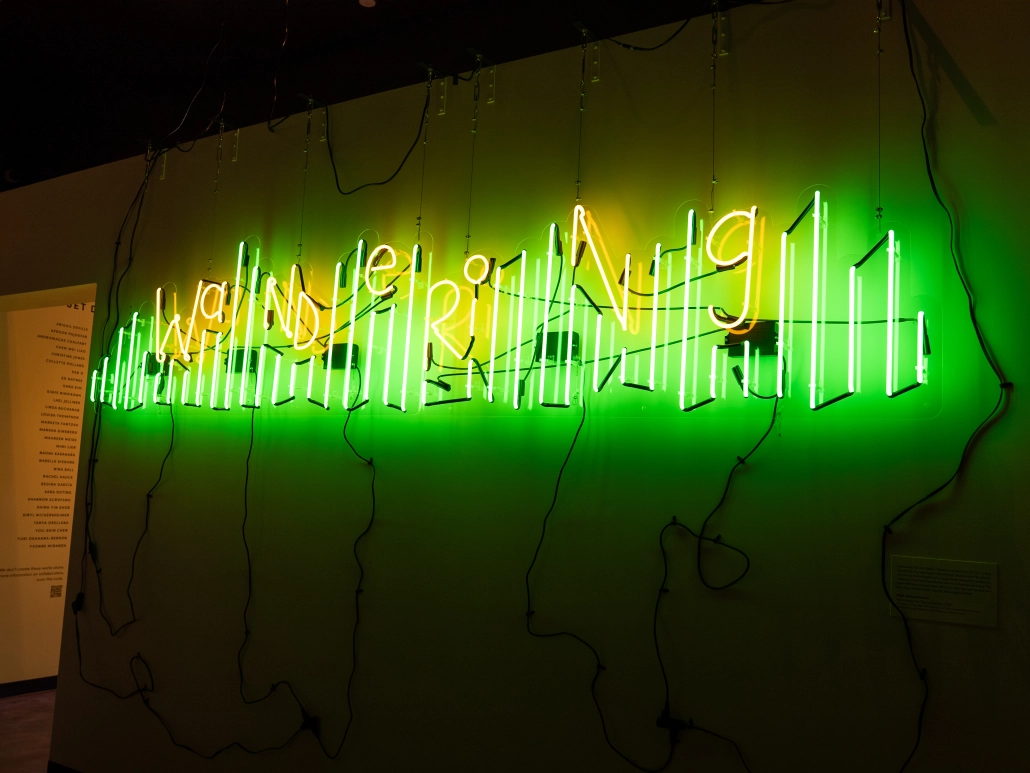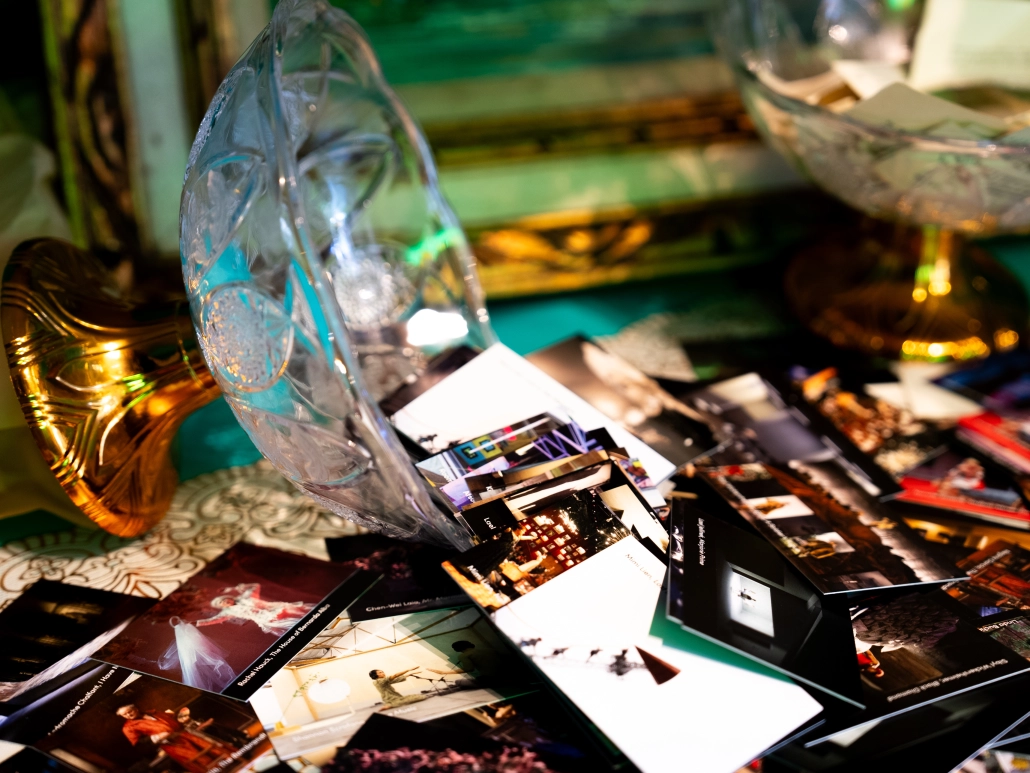‘Scene Shift’ opens at Fisher Museum
The gallery’s immersive exploration of scenic design is on display until April 6.
The gallery’s immersive exploration of scenic design is on display until April 6.

Theatrical sets are one of few art pieces created with the nature of their destruction in mind; it’s difficult to think of another art form whose display is so impermanent. This begs the question of how one separates a set from its respective design process or the inspiration for a work from the act of its creation. Is it possible to appreciate the legacy of a piece while acknowledging the beauty of its transience?
“Scene Shift: The Exhibit,” which opened at the Fisher Museum on Friday, exists in these liminal spaces, inviting visitors to take a closer look at the process of scenic design.
Maureen Weiss and Sibyl Wickersheimer, who co-authored the namesake book “Scene Shift: U.S. Set Designers in Conversations,” curated the exhibit. Both Weiss and Wickersheimer teach set design as associate professors, Weiss at Los Angeles City College and Wickersheimer at the School of Dramatic Arts. The exhibit features work from a wide array of scenic designers, including Weiss and Wickersheimer.
Following the book’s publication, “Scene Shift: The Exhibit” was suggested by Bethany Montagano, the director of USC Museums. Although Montagano realized the potential of “Scene Shift” as an exhibition long before Weiss and Wickersheimer, both artists agree the exhibit was a necessary step in expanding its world.
“We were a little shocked by it as an idea, but actually, it’s what the book needed: to be three-dimensionalized,” Wickersheimer said.
Weiss found the exhibit provided the exact visualization she and Wickersheimer were hoping for after the book’s release.
“What we do is so visual,” Weiss said. “We knew that [the book] needed to have a visual with it.”
Upon entering the exhibit, visitors are greeted with black lines of text. Guests so entranced with the surrounding set pieces just might step over these sentences without a thought, but Weiss and Wickersheimer made the floors integral to the exhibit. The ground is peppered with quotes from the displayed artists — such as “What is the nature of the event we’re making? –Mimi Lien” — and includes striking ruminations on the design process like “It’s actually just a piece of scenery! – Colette Pollard.”

These pithy excerpts encourage guests to carefully ponder the art they’re engaging with and, as in the case of certain installations, directly interacting with. (The exhibit’s final room features a divination game and a shelf of corresponding tarot cards.) Perhaps the displays are “just” pieces of scenery, but the foresight and care that went into their construction is evident.
One of the exhibit’s highlights is a display entitled “Navigating Boundaries,” a wooden shelf that features a variety of objects: books, props, paint and inspiration photos, among other miscellaneous items. The meticulous arrangement of such mundane goods alludes to the temporal nature of scenic design, the titular boundaries referring to material and timing constraints involved with the creative process.
After all, scenic designers spend thousands of hours planning, designing, constructing and perfecting a set — all the while potentially compromising their creative vision in order to meet the show’s budget, scale and venue. This lengthy endeavor culminates with the destruction of the designer’s hard work during a show’s “strike.” The installation asks readers, “Is there something important about how we alter a space and then let it go?”
Each scenic designer has their own perspective regarding their work’s impermanence. Deb O, whose designs are featured in both the exhibit and the book, prefers to disengage with her sets after a show closes.
“When I stopped going to strike, it was a lot better,” Deb O said. “They’re paying me to design, not to strike … The last time I see [the set] is on opening and it’s fabulous.”
Aside from “Navigating Boundaries,” “Scene Shift” displays a collection of collage-like, mishmashed pieces. Scenic designer Abigail DeVille aims to use set design as a vehicle for change, and her work displayed in “Scene Shift” is no exception. “Blur Horizon” is an amalgamation of repurposed objects that questions the unabated promotion of materialism in contemporary society.
The game design background of scenic designer Shing Yin Khor is realized in “The Gentle Oracle Bird.” The mixed media piece places a bird skull beside a pile of tarot cards and allows visitors to playfully divine their fortune before exiting the gallery.
The exhibit’s tour de force is the penultimate room. O’s awe-inducing design for the 2017 New York production of “(Not) Water” consists of a translucent tarp interwoven with fishline netting. The piece is elegantly strung together with recycled water bottles, touching on the play’s themes of climate change and sustainability.
Visitors are welcome to lie beneath the tarp — on a puffy red mat encircled by pool floaties — and stare at the projected images of water above them. The design itself had to be scaled down from its original form; its reproduction was a collaboration between O and USC students.
Above all, “Scene Shift” represents an ongoing conversation about scenic design’s curation, viewing and analysis as art. “Scene Shift: The Exhibit” brings the work of designers to the forefront of this ever-evolving conversation. The display sheds light on an often overlooked and underappreciated aspect of theater. In the words of Weiss herself: “This exhibit is our way of honoring our craft: set design.”
“Scene Shift” is on display until April 6 at the Fisher Museum. Weiss and Wickersheimer will be leading a guided walkthrough of the exhibit Feb. 27 at 1 p.m.
We are the only independent newspaper here at USC, run at every level by students. That means we aren’t tied down by any other interests but those of readers like you: the students, faculty, staff and South Central residents that together make up the USC community.
Independence is a double-edged sword: We have a unique lens into the University’s actions and policies, and can hold powerful figures accountable when others cannot. But that also means our budget is severely limited. We’re already spread thin as we compensate the writers, photographers, artists, designers and editors whose incredible work you see in our daily paper; as we work to revamp and expand our digital presence, we now have additional staff making podcasts, videos, webpages, our first ever magazine and social media content, who are at risk of being unable to receive the support they deserve.
We are therefore indebted to readers like you, who, by supporting us, help keep our paper daily (we are the only remaining college paper on the West Coast that prints every single weekday), independent, free and widely accessible.
Please consider supporting us. Even $1 goes a long way in supporting our work; if you are able, you can also support us with monthly, or even annual, donations. Thank you.
This site uses cookies. By continuing to browse the site, you are agreeing to our use of cookies.
Accept settingsDo Not AcceptWe may request cookies to be set on your device. We use cookies to let us know when you visit our websites, how you interact with us, to enrich your user experience, and to customize your relationship with our website.
Click on the different category headings to find out more. You can also change some of your preferences. Note that blocking some types of cookies may impact your experience on our websites and the services we are able to offer.
These cookies are strictly necessary to provide you with services available through our website and to use some of its features.
Because these cookies are strictly necessary to deliver the website, refusing them will have impact how our site functions. You always can block or delete cookies by changing your browser settings and force blocking all cookies on this website. But this will always prompt you to accept/refuse cookies when revisiting our site.
We fully respect if you want to refuse cookies but to avoid asking you again and again kindly allow us to store a cookie for that. You are free to opt out any time or opt in for other cookies to get a better experience. If you refuse cookies we will remove all set cookies in our domain.
We provide you with a list of stored cookies on your computer in our domain so you can check what we stored. Due to security reasons we are not able to show or modify cookies from other domains. You can check these in your browser security settings.
These cookies collect information that is used either in aggregate form to help us understand how our website is being used or how effective our marketing campaigns are, or to help us customize our website and application for you in order to enhance your experience.
If you do not want that we track your visit to our site you can disable tracking in your browser here:
We also use different external services like Google Webfonts, Google Maps, and external Video providers. Since these providers may collect personal data like your IP address we allow you to block them here. Please be aware that this might heavily reduce the functionality and appearance of our site. Changes will take effect once you reload the page.
Google Webfont Settings:
Google Map Settings:
Google reCaptcha Settings:
Vimeo and Youtube video embeds:
The following cookies are also needed - You can choose if you want to allow them:
